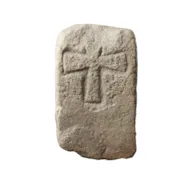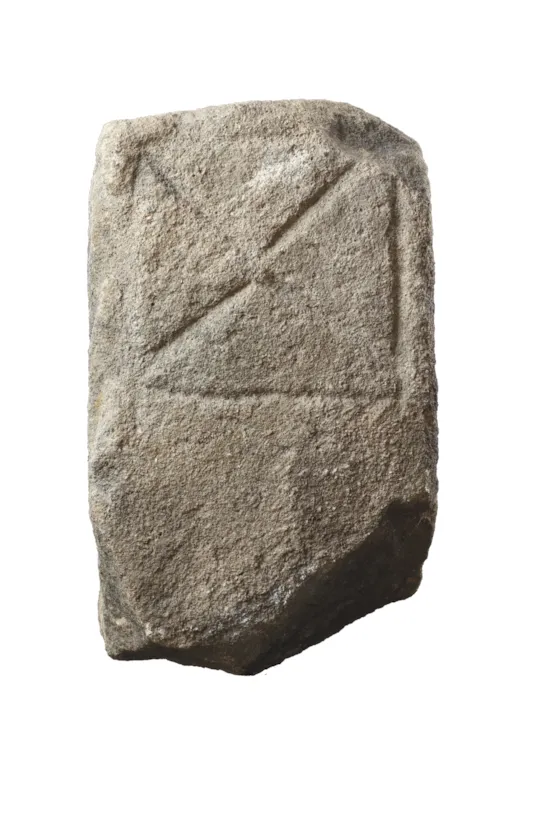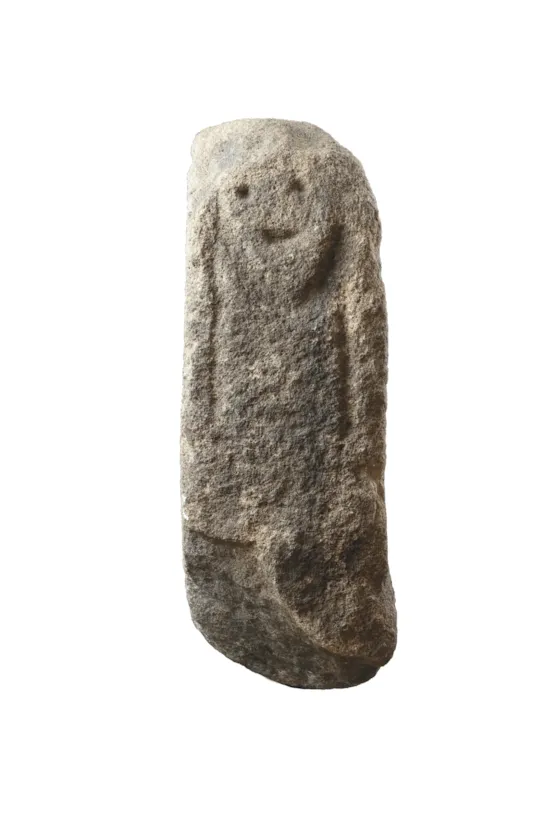An Unusually Large and Rare Anglo-Saxon / Celtic Stone Marker Stone
An Unusually Large and Rare Anglo-Saxon / Celtic Stone Marker Stone
With carved cross to the front and an equal armed cross to the reverse, two carved Celtic heads to either side
Limestone
Britain
1st to 2nd Century AD and 6th to 7th Century AD
SIZE: 48cm high, 28cm wide, 16cm deep - 18¾ ins high, 11 ins wide, 6¼ ins deep / 54cm high - 21⅓ ins high (with base)
With carved cross to the front and an equal armed cross to the reverse, two carved Celtic heads to either side
Limestone
Britain
1st to 2nd Century AD and 6th to 7th Century AD
SIZE: 48cm high, 28cm wide, 16cm deep - 18¾ ins high, 11 ins wide, 6¼ ins deep / 54cm high - 21⅓ ins high (with base)
An Unusually Large and Rare Anglo-Saxon / Celtic Stone Marker Stone
With carved cross to the front and an equal armed cross to the reverse, two carved Celtic heads to either side
Limestone
Britain
1st to 2nd Century AD and 6th to 7th Century AD
SIZE: 48cm high, 28cm wide, 16cm deep - 18¾ ins high, 11 ins wide, 6¼ ins deep / 54cm high - 21⅓ ins high (with base)
With carved cross to the front and an equal armed cross to the reverse, two carved Celtic heads to either side
Limestone
Britain
1st to 2nd Century AD and 6th to 7th Century AD
SIZE: 48cm high, 28cm wide, 16cm deep - 18¾ ins high, 11 ins wide, 6¼ ins deep / 54cm high - 21⅓ ins high (with base)
The simplest form of early Anglo-Saxon, Celtic and Pictish Christian monument is the cross marked stone, said to have originated in British and Irish missionary work among the Northern British in the 6th and 7th centuries. In the ‘Life of St Columba’ by Adomnán there is a story of how one of the earliest of these crosses was made by the saint himself when he marked the gates of the hilltop fortress near Loch Ness, the northern base of the powerful pagan Pictish King Bridei, with ‘the sign of the Lord’s cross’ in order to gain entry and secure his co-operation in allowing a start to be made in the conversion of his people.
Sometimes referred to as a prayer-cross these symbol incised stone slabs were a basic aid for instruction and devotion. They could also afford protection at the entrance of a building and marked the ground upon which they stood as sacred, whether on funerary ground or in an enclosed devotional space. The art of the cross marked stone slab in Britain is part of a common cultural package brought by Christianity to these shores and the displaying of these early symbolic stones was a token of the acceptance by the Anglo-Saxons, Celts and Picts of the Christian faith. It has been suggested that the stone marker is without doubt of Celtic origin, dating from the 1st to 2nd centuries AD, with the addition of the cross a few centuries afterwards with the widespread influence of Christianity across the kingdom.
Sometimes referred to as a prayer-cross these symbol incised stone slabs were a basic aid for instruction and devotion. They could also afford protection at the entrance of a building and marked the ground upon which they stood as sacred, whether on funerary ground or in an enclosed devotional space. The art of the cross marked stone slab in Britain is part of a common cultural package brought by Christianity to these shores and the displaying of these early symbolic stones was a token of the acceptance by the Anglo-Saxons, Celts and Picts of the Christian faith. It has been suggested that the stone marker is without doubt of Celtic origin, dating from the 1st to 2nd centuries AD, with the addition of the cross a few centuries afterwards with the widespread influence of Christianity across the kingdom.
Ex Private English collection
An Unusually Large and Rare Anglo-Saxon / Celtic Stone Marker Stone

SOLD






YOU MAY ALSO LIKE

